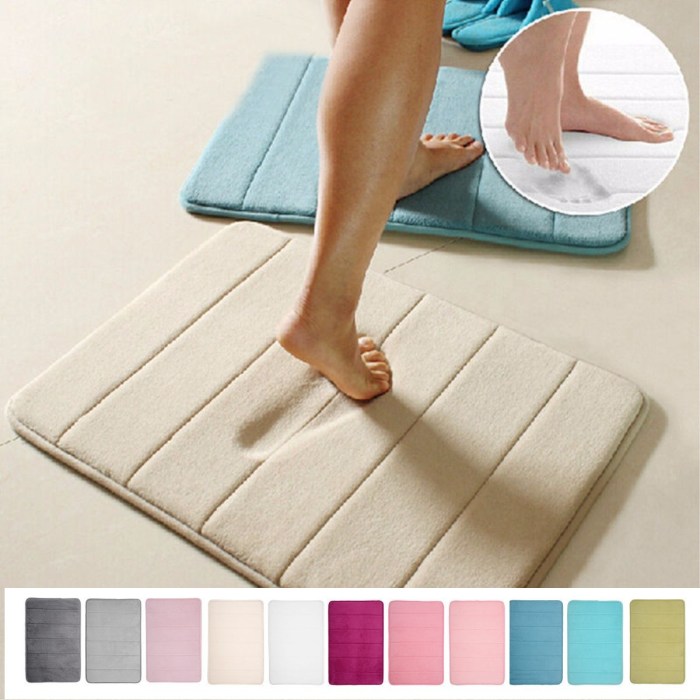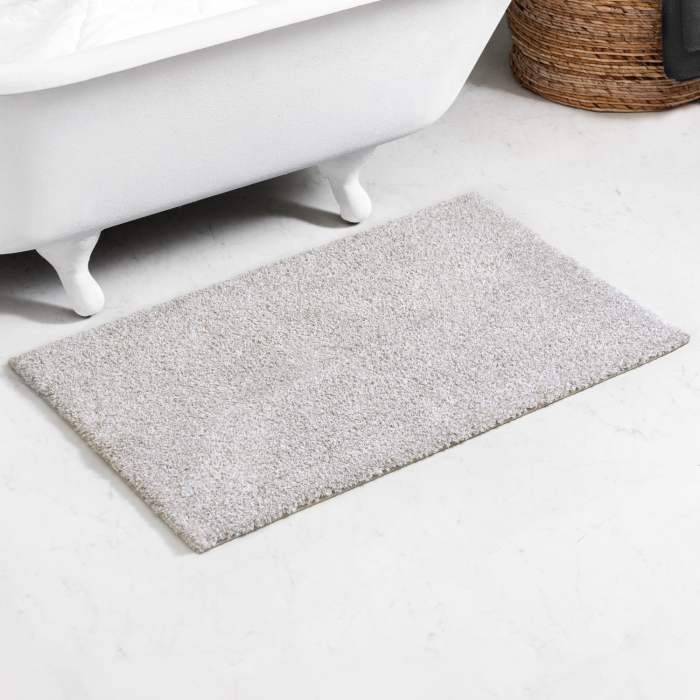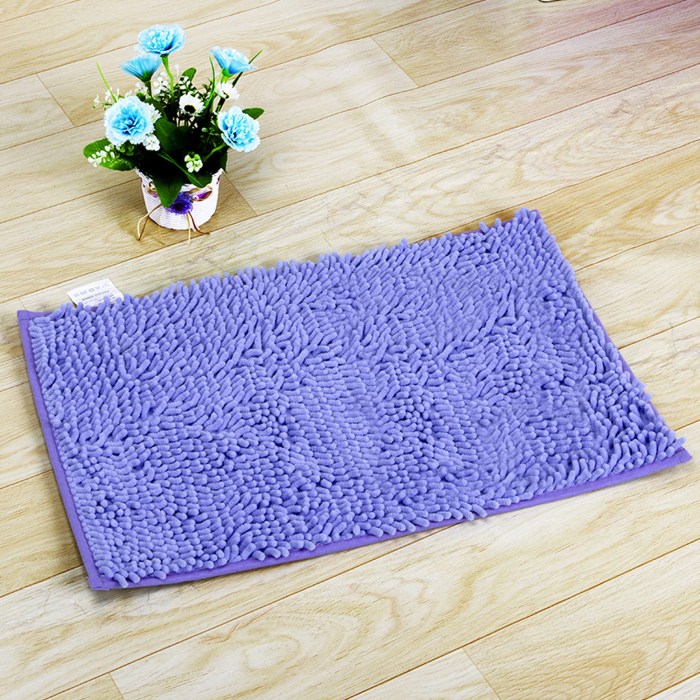Stepping out of a warm shower onto chilly tile floors can be an unpleasant experience, especially during the colder months. Fortunately, soft bathroom rugs offer a cozy and practical solution to this problem. These rugs not only add a touch of warmth and comfort to your bathroom but also prevent slips and falls on slippery surfaces.
In this comprehensive guide, we will delve into the world of soft bathroom rugs for cold tile floors. We will explore the different types of rugs available, their materials, design considerations, and care and maintenance tips. Additionally, we will address some frequently asked questions to help you make an informed decision when choosing the perfect rug for your bathroom.
Soft Bathroom Rugs for Cold Tile Floors
Soft bathroom rugs provide a luxurious and practical solution for cold tile floors. They offer comfort underfoot, absorb moisture, and enhance the overall ambiance of your bathroom.
Materials Used in Soft Bathroom Rugs
The materials used in soft bathroom rugs play a crucial role in determining their comfort and warmth. Some common materials include:
- Cotton: Cotton rugs are soft, absorbent, and breathable, making them ideal for bathrooms. They are also machine-washable for easy care.
- Microfiber: Microfiber rugs are ultra-soft and absorbent, and they dry quickly, making them a great choice for bathrooms with high humidity.
- Chenille: Chenille rugs are plush and velvety soft, providing a luxurious feel underfoot. They are also highly absorbent and durable.
- Memory foam: Memory foam rugs conform to the shape of your feet, providing unparalleled comfort and support. They are also hypoallergenic and antimicrobial.
Types of Soft Bathroom Rugs
Soft bathroom rugs are available in various materials, sizes, shapes, and features to complement different bathroom designs and provide comfort and warmth underfoot.
The following table compares four common types of soft bathroom rugs:
| Type | Materials | Sizes | Shapes | Features |
|---|---|---|---|---|
| Chenille | Soft, plush synthetic fibers | Small to large | Rectangular, oval, round | Highly absorbent, machine-washable, quick-drying |
| Microfiber | Fine, tightly woven synthetic fibers | Small to extra large | Rectangular, square, contoured | Ultra-absorbent, stain-resistant, antimicrobial |
| Memory Foam | Dense, polyurethane foam | Small to medium | Rectangular, square, contoured | Conforms to body shape, provides support and cushioning |
| Cotton | Natural, absorbent fibers | Small to large | Rectangular, oval, round | Soft, breathable, machine-washable, prone to shrinkage |
Advantages and Disadvantages
Each type of soft bathroom rug offers unique advantages and disadvantages:
- Chenille: Plush, absorbent, and machine-washable, but can shed fibers.
- Microfiber: Highly absorbent, stain-resistant, and antimicrobial, but can be slippery when wet.
- Memory Foam: Comfortable and supportive, but can be expensive and may not be machine-washable.
- Cotton: Soft, breathable, and machine-washable, but prone to shrinkage and fading.
Design Considerations
When selecting soft bathroom rugs for cold tile floors, design elements play a crucial role in enhancing the overall look and feel of the space. Color, pattern, and texture contribute to creating a cohesive and inviting atmosphere.
Color plays a significant role in setting the tone of the bathroom. Neutral colors like white, beige, or gray provide a classic and versatile backdrop, allowing other elements to take center stage. Bold colors like navy, emerald green, or burgundy add a touch of drama and can complement existing décor.
Pattern
Patterned rugs introduce visual interest and can help define the space. Geometric patterns, such as stripes or chevrons, create a modern and sophisticated look. Floral patterns add a touch of whimsy and charm, while animal prints can add a touch of the unexpected.
Texture
Texture adds depth and dimension to the bathroom. Plush rugs with a high pile height provide a luxurious and inviting feel underfoot. Flat-weave rugs are more durable and easier to clean, making them a practical choice for high-traffic areas.
Comfort and Warmth
Soft bathroom rugs provide a comfortable and warm surface to step on, especially during the cold winter months. The comfort and warmth of a rug are determined by several factors, including pile height, density, and backing.
Pile Height
Pile height refers to the length of the fibers that make up the rug’s surface. Rugs with higher pile heights are generally softer and more comfortable to stand on, as they provide more cushioning underfoot. However, rugs with higher pile heights can also be more difficult to clean and maintain, as dirt and debris can get trapped in the fibers.
Density
Density refers to the number of fibers per square inch of the rug. Rugs with higher densities are more durable and can withstand more wear and tear. They are also less likely to shed fibers or become matted over time.
However, rugs with higher densities can also be more expensive.
Backing
The backing of a rug is the material that holds the fibers in place. There are several different types of backing materials, including latex, rubber, and jute. Latex backing is the most common type of backing, as it is durable and provides good grip on the floor.
Rubber backing is also durable, but it can be more expensive than latex backing. Jute backing is a natural material that is biodegradable and environmentally friendly, but it is not as durable as latex or rubber backing.
Care and Maintenance
To ensure your soft bathroom rugs remain in pristine condition and provide optimal comfort, proper care and maintenance are essential.
Regular cleaning and proper storage techniques will not only extend the life of your rugs but also maintain their aesthetic appeal.
Washing
For optimal results, follow these guidelines when washing your soft bathroom rugs:
- Check the care label for specific instructions.
- Use a mild detergent and cold water.
- Avoid harsh chemicals or bleach.
- Machine wash on a gentle cycle.
- Do not overload the washing machine.
Drying
Proper drying is crucial to prevent damage and ensure longevity:
- Tumble dry on low heat or air-dry.
- Do not over-dry, as this can cause shrinkage.
- If possible, hang the rug outside to air-dry.
Storage
When not in use, store your soft bathroom rugs properly to maintain their shape and quality:
- Roll or fold the rugs neatly.
- Store in a dry, well-ventilated area.
- Avoid exposing the rugs to direct sunlight.
- Use mothballs or cedar chips to deter pests.
Final Thoughts
Choosing the right soft bathroom rug for cold tile floors can transform your bathroom into a warm and inviting space. By considering the factors discussed in this guide, you can find a rug that not only provides comfort and warmth but also complements the overall design of your bathroom.
So, go ahead, treat your feet to the ultimate luxury and enjoy the cozy comfort of a soft bathroom rug on your cold tile floors.



